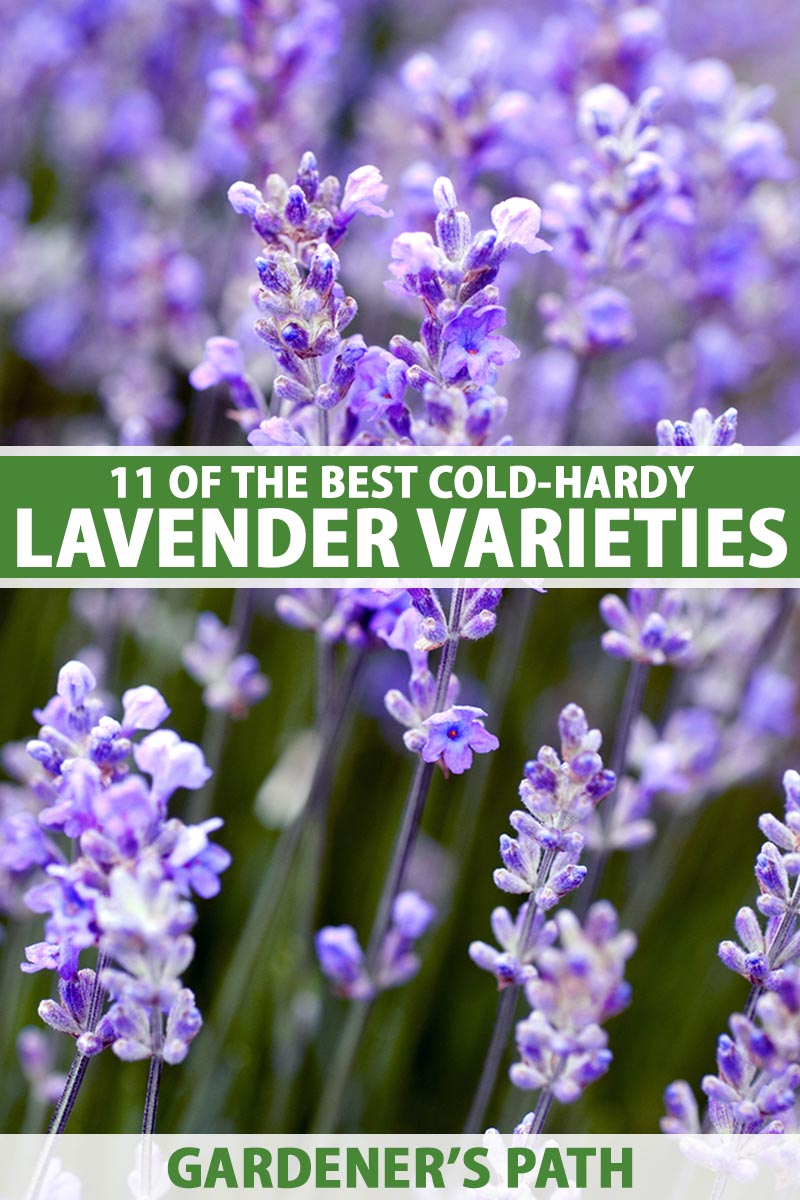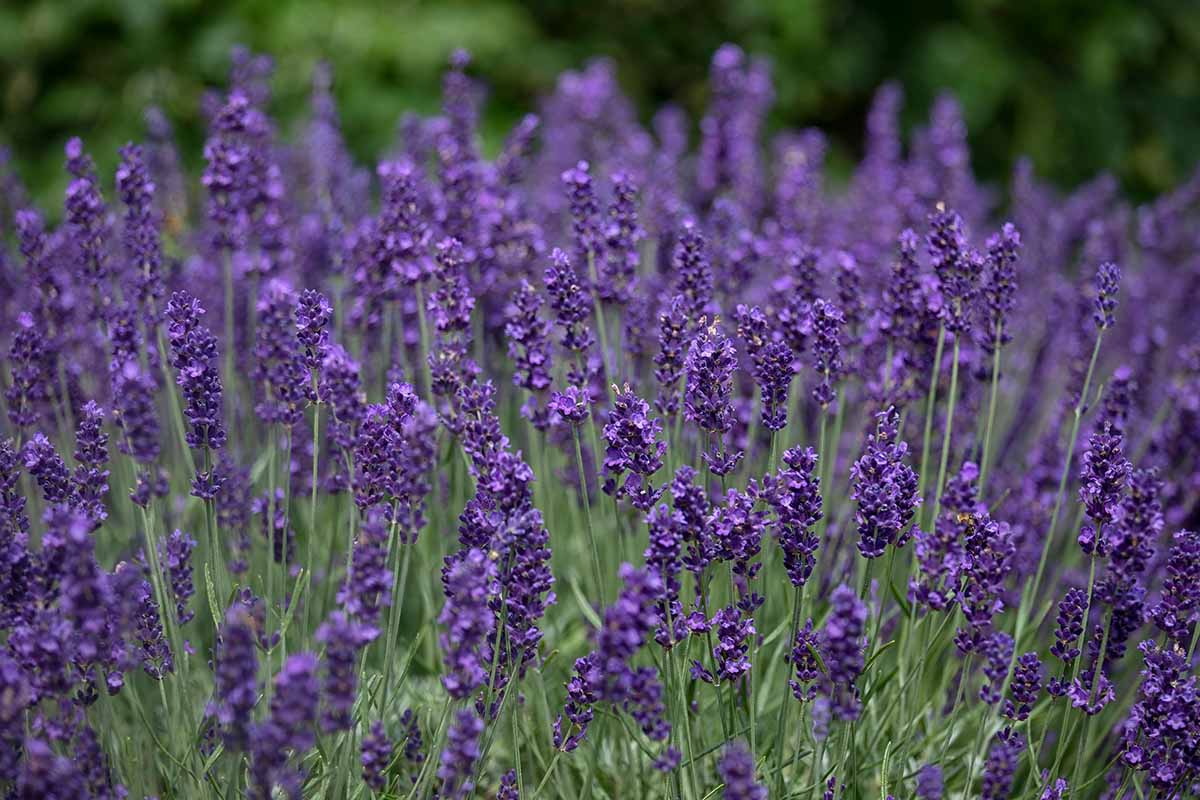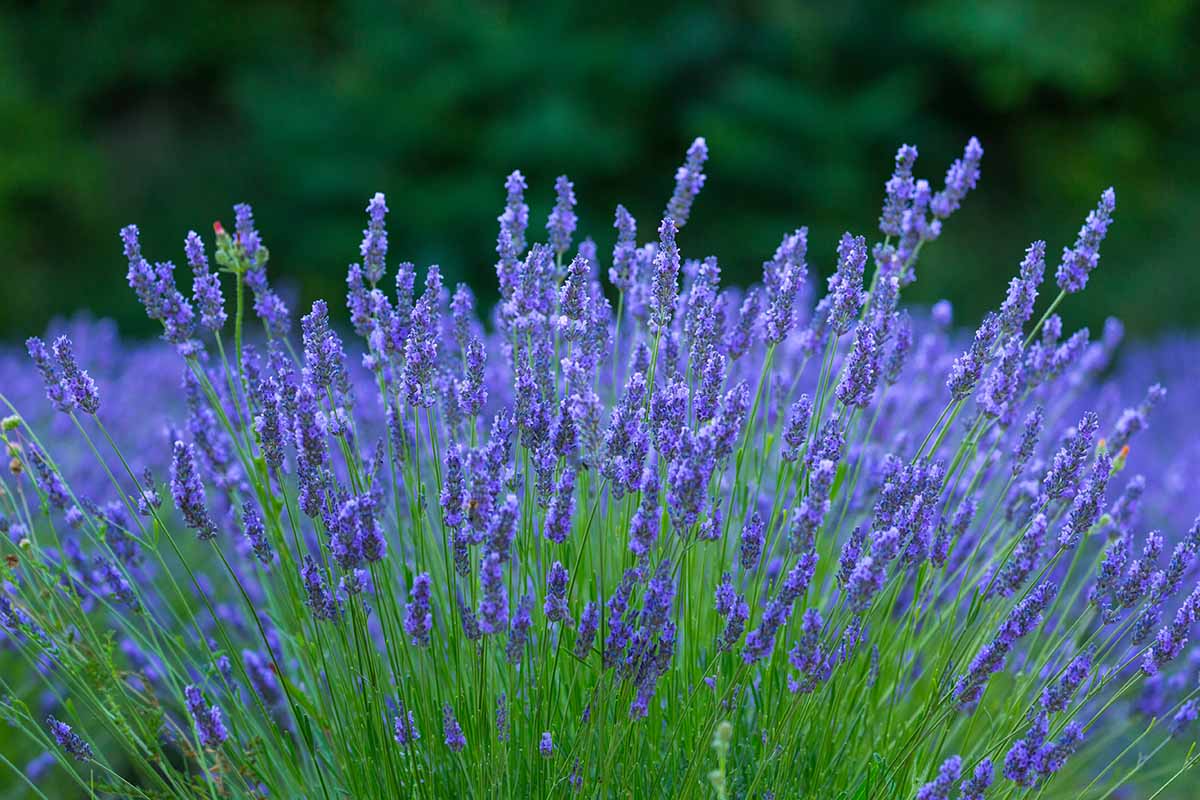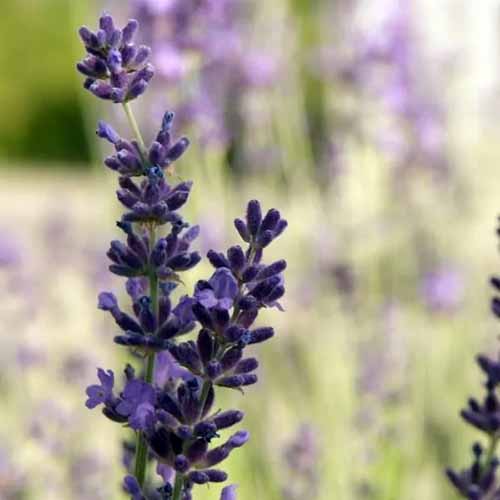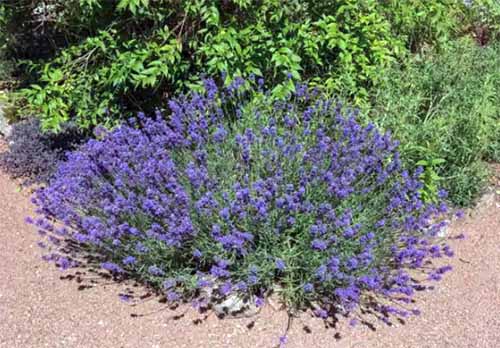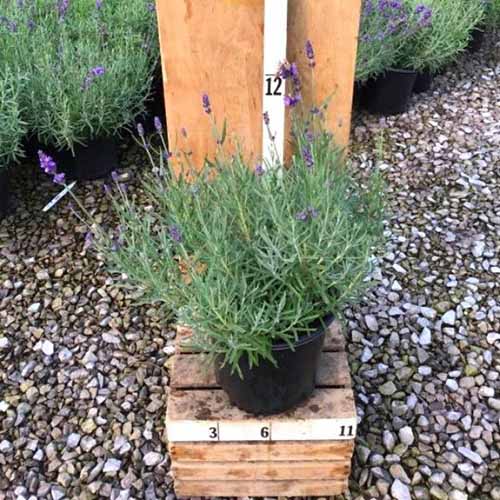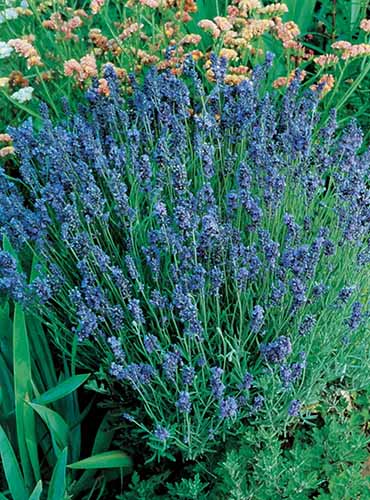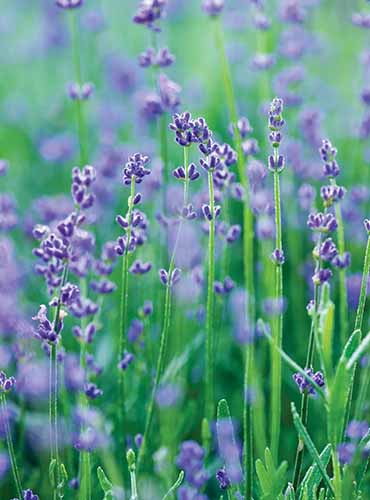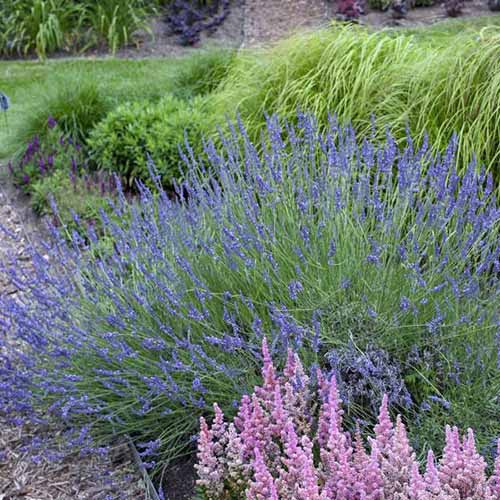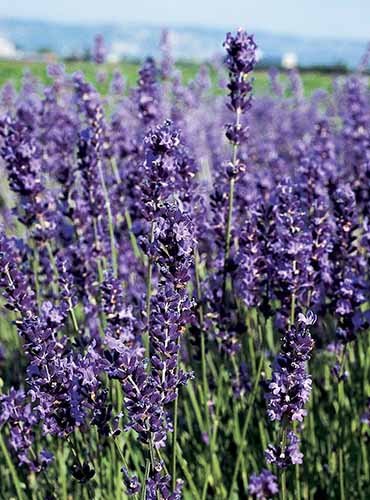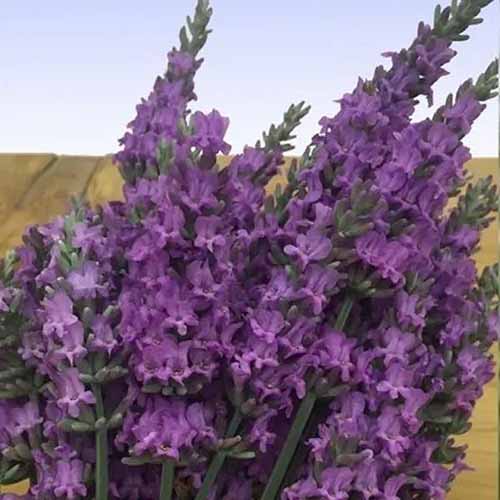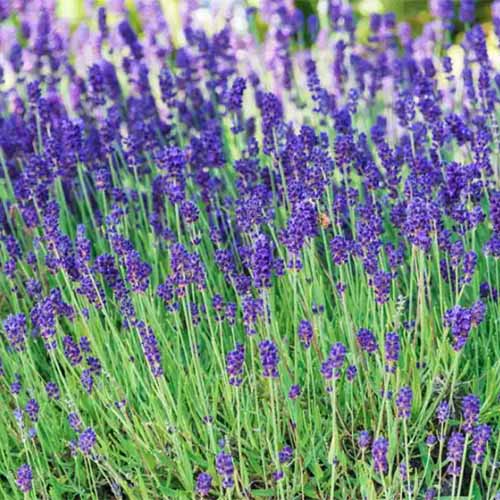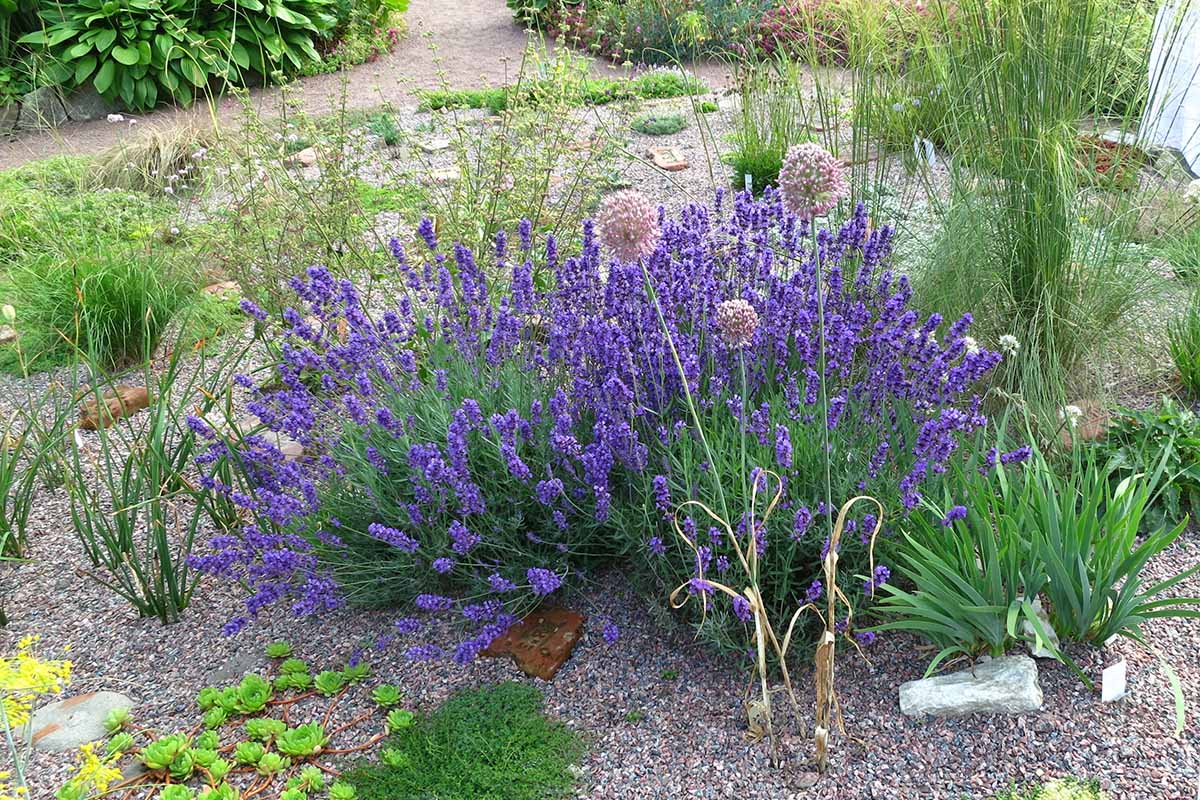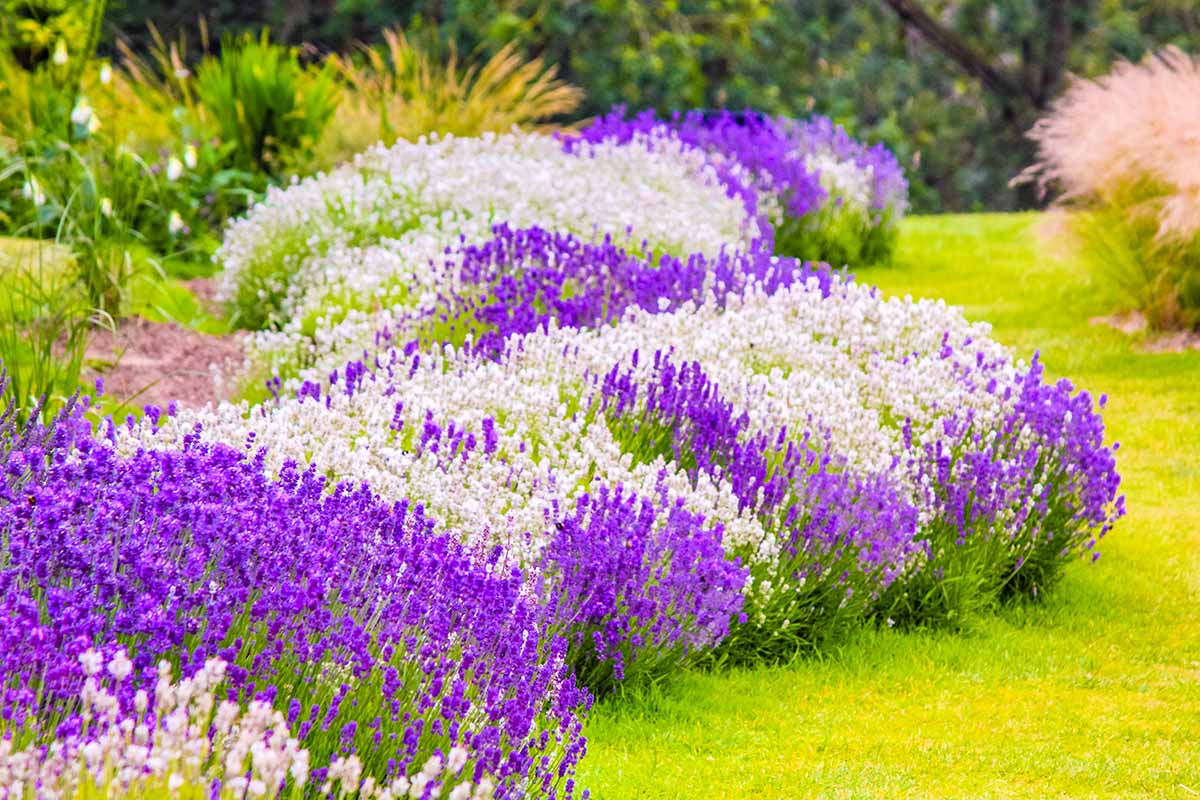Many types of these beautiful, aromatic herbs are frost tender and can only grow as annuals in regions with cold winters, like the French (Lavandula dentata) and Spanish (L. stoechas) species. We link to vendors to help you find relevant products. If you buy from one of our links, we may earn a commission. These cold-hardy selections also prefer summer climates with low humidity and temperatures that don’t exceed 90°F. The tough, frost-resilient types belong to two main groups: The first is the hardy English (L. angustifolia) species and its many cultivars, including classics such as ‘Hidcote’ and ‘Munstead.’ And the second group are the spectacular hybrid lavandins (L. x intermedia), bred from the English and Portuguese (L. latifolia) species. They feature the cold hardiness of English plants plus the heat and humidity tolerance of the Portuguese types – so you’ll also find some of them in our roundup of the best lavenders for hot or humid climates as well! Both the English varieties and lavandins have excellent cold hardiness and shrug off conditions like freezing temperatures, hard frosts, and heavy snowfall. But it’s important to set them up for success with the right conditions to survive cold, wet winters – which is covered in the Planting Primer section coming up. Highly aromatic, in shades of purple as well as other beautiful colors like blue, mauve, and white, are you ready to add some cold-hardy lavender to your gardens? Then get out your garden journal and take some notes as we look at 11 of the best types of lavender for cooler climates! Here’s what’s ahead: To prevent root rot, keep the following tips in mind to provide plants with the best conditions to overwinter year after year. Well branched with strong stems and producing an abundance of long-lasting flowers, these compact plants have a height and spread of only nine to 12 inches. ‘Avignon Early Blue’ A beautiful choice for mass planting in drifts or low barriers, containers, and cottage, cutting, or rock gardens, this cultivar is hardy in Zones 6 to 8. Container plants are available at Nature Hills Nursery.
2. Grosso
Among the most fragrant of all lavenders, L. x intermedia ‘Grosso’ is a knockout with large and showy purple flower heads on tall stems. Flowering abundantly from midsummer to fall, the dense plants stay handsome year round with long, gray-green leaves in an attractive mound of 24 to 36 inches tall and wide. ‘Grosso’ An outstanding choice for borders, low hedges, flanking seating areas and walkways, or in cutting, courtyard, and herb gardens, this is also a good choice for dried flowers or potpourri. Hardy in Zones 5 to 8. Find container plants at Nature Hills Nursery.
3. Hidcote
A classic English cultivar, L. angustifolia ‘Hidcote’ is highly fragrant and beloved for its long buds of dark purple that open to deep lilac flowers in mid-spring to early summer. The robust plants feature attractive, evergreen foliage of blue-green and form bushy mounds 24 inches high and wide. ‘Hidcote’ An Award of Garden Merit (AGM) winner, ‘Hidcote’ makes an excellent choice for gardeners with cold winters and is wonderfully versatile in beds, borders, containers, and foundations or in cottage, cutting, herb, and rock gardens. Hardy in Zones 4 to 10. Two-pack container plants are available at Home Depot.
4. Imperial Gem
Beautiful, compact, and loaded with flowers, L. angustifolia ‘Imperial Gem’ features fragrant, plump buds of royal purple that open to lilac flowers and pretty, glaucous foliage. Flowering starts in late spring on dense plants with a height and spread of up to 24 inches. The silvery, blue-green foliage forms a compact mound topped with long flower wands that are perfect for cutting to use in fresh and dried bouquets. ‘Imperial Gem’ Another AGM winner, these shrubs make a beautiful, aromatic addition to banks, beds, foundations, patio planters, and rockeries. Hardy in Zones 5 to 9. Container plants are available at Nature Hills Nursery.
5. Lacy Frills
L. angustifolia ‘Lacy Frills’ is a striking, white cultivar that features a deep, sweet fragrance, long, white florets with a hint of mauve, and cool blue-green foliage. It’s the first white lavender that readily grows from seed (most white varieties are started vegetatively), and the tidy, dwarf plants reach a height of up to 14 inches with a 12-inch spread. ‘Lacy Frills’ A unique stand-alone specimen plant or a striking addition to beds, foundations, patio pots, walkways, and cottage or rock gardens, this cultivar is hardy in Zones 5 to 9. Seeds and container plants are available at Burpee.
6. Lady
A beautiful dwarf specimen, L. angustifolia ‘Lady’ is highly fragrant with an abundance of mauve flowers in the early summer garden. One of the few varieties to flower reliably in their first year when started from seed, ‘Lady’ is an All-America Selections (AAS) winner noted for its free flowering, compact habit and soft, frosty green foliage. ‘Lady’ The handsome plants grow up to 10 inches tall with a 12-inch spread and are superb for low barriers, borders, and containers, or in alpine, herb, knot, and rock gardens. Hardy in Zones 5 to 9. Seeds are available at Burpee.
7. Munstead
Extremely fragrant with blue-purple buds that open to pale lilac flowers in late spring to early summer, L. angustifolia ‘Munstead’ is a timeless garden classic. These are dense plants with pretty, gray-green foliage that grow to a height of 20 to 24 inches, with a spread of 24 to 30 inches. ‘Munstead’ Well-suited for beds, containers, low hedges, and in cottage, cutting, herb, and rock gardens, ‘Munstead’ creates gorgeous drifts of color when mass planted. Hardy in Zones 4 to 9. Container plants can be found at Burpee.
8. Phenomenal
A striking, perfumed lavandin with long spires of purple-blue flowers and gorgeous, silvery gray foliage, ‘Phenomenal’ (aka L. x intermedia ‘Niko’) is also highly disease resistant. A large plant that reaches a height of 24 to 36 inches tall with a spread of 36 to 48 inches, masses of flowers appear in early summer. ‘Phenomenal’ reblooms lightly until fall. ‘Phenomenal’ A beautiful selection around patios and seating areas, in beds or foundations, massed into drifts, and in cottage, cutting, herb, and knot gardens, this cultivar is hardy in Zones 5 to 9. Container plants are available at Nature Hills Nursery.
9. Provence Blue
Evocative of the lavender fields of southern France, L. angustifolia ‘Provence Blue’ produces clouds of aromatic, royal purple buds that open to lilac flowers in early to late summer. The multi-stemmed plants reach a height and width of 16 inches and the ornamental glaucous foliage takes on coppery-bronze hues in fall and winter. ‘Provence Blue’ A beautiful selection for containers and patio pots, edging, massed in drifts, and in alpine, herb, and rock gardens. Hardy in Zones 5 to 9. Seeds and plants are available at Burpee.
10. Sensational
True to its name, ‘Sensational’ (aka L. x intermedia ‘Tesseract’) is an exciting and highly perfumed lavandin with long spires of purple-blue flowers and shimmering, silvery gray foliage. A robust, multi-branched plant loaded with flowers in early summer that reblooms lightly until fall, ‘Sensational’ reaches a height of 24 to 30 inches with a spread of 30 to 36 inches. A top performer in gardens with both cold winters and summer humidity, plants stay evergreen in all but the coldest regions. ‘Sensational’ A superb selection for drifts, foundations, or low hedges and in cottage, cutting, and herb gardens. Hardy in Zones 5 to 9. Container plants can be found at Nature Hills Nursery.
11. SuperBlue
Richly aromatic with deeply saturated, violet blue flowers and pretty, blue-green foliage, L. angustifolia ‘SuperBlue’ is free-flowering in the late spring to early summer garden with a lighter rebloom continuing until fall. The compact plants have a height and spread of 10 to 12 inches, and they also have good heat and humidity tolerance. ‘SuperBlue’ This cultivar makes a perfect choice for borders, containers and patio pots, edging, and in alpine or rock gardens. Hardy in Zones 4 to 9. Bare root plants are available at Home Depot.
Bonus: Planting Primer for Cool Regions
One of the main causes for lavender failure in any climate is root rot, which is often caused by overly wet conditions such as standing water and soggy soil, or a crowded environment.
Give these woody herbs a full sun exposure and plant with adequate spacing to ensure ample air circulation, which helps to keep plants dry and healthy.
Provide a well-draining site. When planting, loosen the soil to a depth of 12 inches and mix in a shovelful or two of landscape sand or pea gravel to improve drainage if needed.
If your soil bogs down or retains water in winter, create hills or mounds for planting to ensure free drainage.
Keep the crown free of moisture-retentive mulches like leaf mold or straw. Instead, use a two- to four-inch layer of porous materials such as pea gravel to protect the crown and roots from cold temperatures.
To maintain compact, showy plants and minimize winter damage, prune as outlined in our guide on when and how to prune lavender.
In areas with consistent cold temperatures but without a reliable snowpack, provide protection against freezing temperatures and drying winds. Loosely pile evergreen boughs or cover winter-prepped plants (pruned and mounded) with floating row cover fabric as needed.
For more cultivation and care info, our growing guide on how to plant and grow lavender has all the details. Help them to thrive with full sun and excellent drainage, deadhead after flowering, and snuggle them in out of harsh winds, then chill out with them and enjoy their perfumed beauty for years to come! What are your favorite lavenders for cooler climates? Let us know in the comments section below. And for more information about growing herbs in your garden, add these guides to your reading list next:
Tips for Growing an Abundant Edible Herb GardenHow to Grow Herbs in ContainersSpring Care Tips for Your Herb Garden
